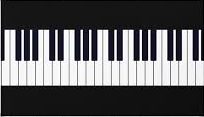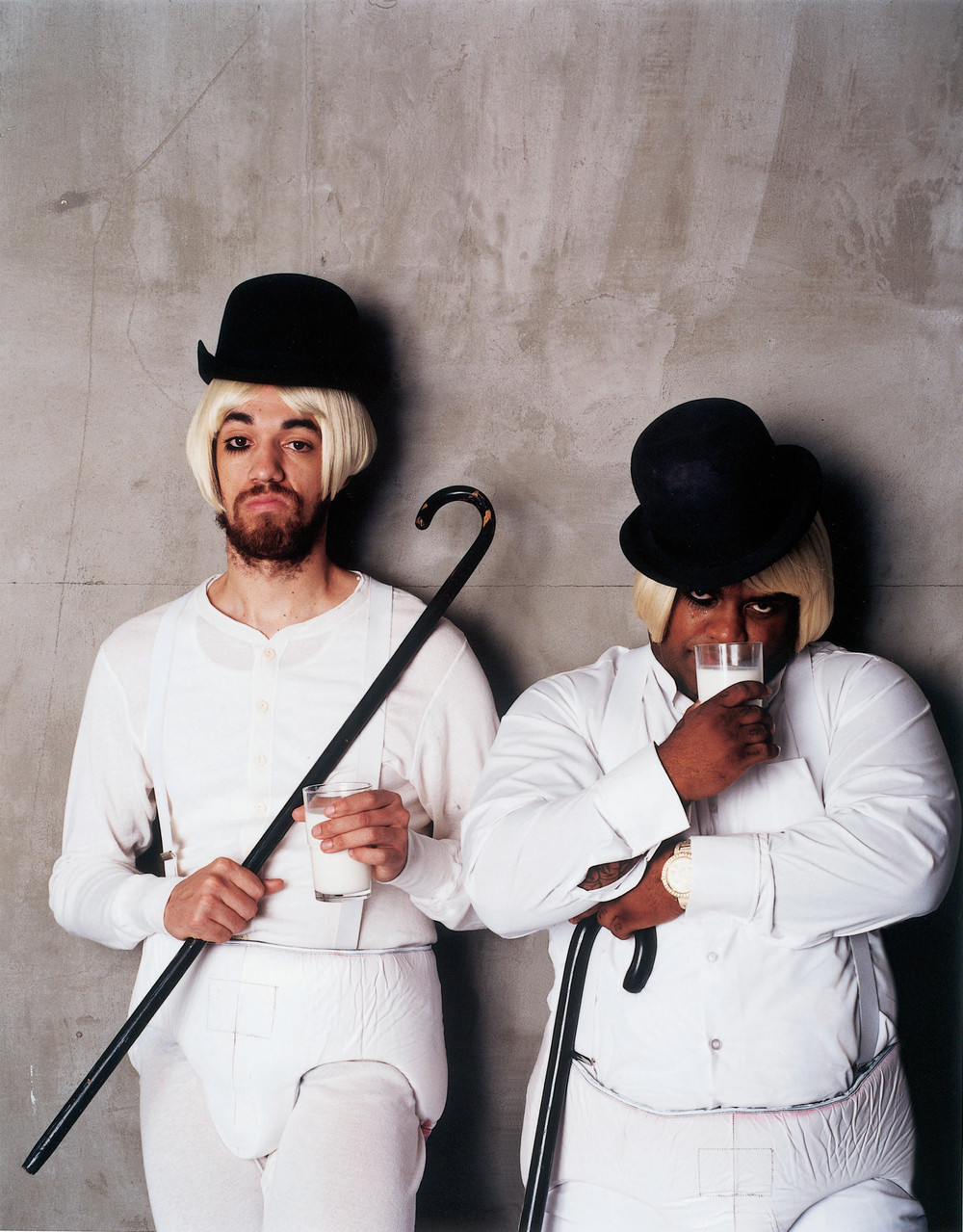Companies use algorithms, math and even colors to chart a song’s potential for success
GRAMMY.com
Nick Krewen
March 20, 2008
When Gnarls Barkley‘s “Crazy” enjoyed its chart-topping run in 2006, its blockbuster stature may have sounded like a foregone conclusion to some.
After all, the song had a whimsical feel, an easily digestible melody and a can’t-miss chorus that had no problem lodging itself in your memory’s instant recall.
But Warner Music, distributor of Gnarls Barkley label home Downtown, needed additional reassurance that their investment was going to yield dividends, so they contacted Platinum Blue Music Intelligence.

Gnarls Barkley
Using a cutting-edge technology called Music Xray that analyzes underlying mathematical patterns in music, New York City-based Platinum Blue determined that yes, “Crazy” had the potential to go all the way … and a smash was born.
The song’s eventual performance confirmed Platinum Blue’s findings: “Crazy” topped the charts in numerous international territories, sold more than 1 million copies in the United States alone and eventually earned the Gnarls Barkley tandem of Danger Mouse and Cee-Lo a GRAMMY Award for Best Urban/Alternative Performance.
For Mike McCready, who co-founded his company in December 2005 with marketing executive Tracie Reed, it was timely validation that Music Xray could be a useful and successful marketing tool to predict record company successes.
“We compare the technology to the X-ray,” McCready explains. “The same way that the X-ray shows the doctor the patient in a way that couldn’t be seen before, the Music Xray shows the music executive or musician or producer the music and the market in a way that they couldn’t see without this technology.”
Platinum Blue isn’t the only company to use math as a method in forecasting public tastes.
Monrovia, Calif.-based Music IP uses a series of algorithms to help recommend playlists for people that subscribe to their service, and London, England-based self-described “social music revolution” Internet radio Web site Last.fm also employs its own math-based “scrobbling” formula for personalizing individual music listener profiles.
But Platinum Blue and Music Intelligence Solutions, with its Hit Song Science technology, are the only two companies dedicated to the hit prediction business.
In an era when sales are suffering and access to reliable avenues of exposure like radio and television is becoming increasingly challenging, record labels and producers are turning to good old-fashioned arithmetic to help them take that calculated risk and beat the odds.
In the case of Platinum Blue’s Mike McCready (no relation to the Pearl Jam guitarist), it was inadvertently determining that successful hit records consist by and large of identifiable mathematical patterns.
“We made this discovery by accident when I was at my former company, Polyphonic HMI,” recalls McCready. “We were messing around with some technology so we could build a music search recommendation and discovery platform, and in the process of doing that, we were fingerprinting — or mathematically analyzing — these millions of songs.
“We had this application that would isolate and quantify — a sign on a mathematical curve — a number of characteristics of a song. So we could isolate melody, harmony, beat, tempo, rhythm, octave, pitch, chord progression, fullness of sound — about 30 of these traits.”
McCready and his staff quickly discerned that hit songs boasted certain similarities.
“We noticed that these hit songs seemed to come up with about 60 different groups of mathematical scores,” he observed. “So you’d have a good bunch of songs that conform to mathematical pattern ‘A’ and another group of songs that would conform to mathematical pattern ‘B.’ “There weren’t very many songs that didn’t belong to a group.”
McCready went a step further, looking at different tunes that had been promoted as hit singles but underperformed in the market. He discovered further connections.
“What we noticed was that most of those songs, while they sounded and felt like hits, they didn’t conform to one of these patterns.”
It was all the evidence McCready needed.
“We figured out that having these optimal mathematical patterns seemed to be a necessary, but not sufficient, condition for having a hit song.
“So we started building a business around this, going to music labels and telling them, ‘Look, it’s not enough for the song to sound and feel like a hit or for it to be promoted effectively. But if, in addition to those two criteria, you have these optimal mathematical patterns, we think you can increase your hit rate to somewhere over 80 percent.'”
In its short two year-plus history, Platinum Blue has consulted for Warner Music Group, EMI, Sony BMG and Vanguard Records, with McCready claiming a 100 percent success rate.
However, McCready acknowledges that Platinum Blue’s results are completely subject to the whims of his clientele.
“Not every recommendation we make to the major labels is followed,” says McCready. “We might say track three is the album song that conforms most to these patterns, but that track might not sound like a hit to the A&R guys, so they release another song, which invariably doesn’t work out.
“On the other hand, when we do recommend a song be released and the A&R team also feels that it should be released and promoted, we’ve never been wrong.”
McCready also says Platinum Blue can’t pinpoint exactly where a song will land on the charts.
“Once a song gets into the Top 30, it kind of takes on a life of its own and many other factors influence its success,” he explains.
“So we’re not very good, frankly, at telling you if your song is going to be No. 1 or No. 20. But we are good at telling you if it’s going to be in the Top 30 or not get there at all.”
Platinum Blue isn’t exclusive to labels. For $10, unsigned artists can also submit their songs for what McCready calls “a general indication as to whether or not their songs conform to these patterns.”
Once their song is analyzed, recipients receive a color-coded report that indicates whether the song has hit potential. Fall into the blue category, and you’ve got an above-average chance that the song will deliver a hit.
“That doesn’t mean that they sound like hits or that they would be promoted effectively, but if both conditions are true, that’s when you have about an 80-85 percent chance of that song providing a return on investment,” McCready asserts.
McCready also says that Platinum Blue can be used as a production litmus test to fix it in the mix.
“We can isolate each one of the attributes that we measure and we can tell the producer, ‘Look, we can’t give you any creative direction. We can’t tell you how to change this, but the problem seems to be in the bass line of this particular song,” he notes.
“So maybe the producer will just increase the decibel of the bass or muddy it up and give us three mixes.
“We’ll reanalyze and say, ‘Whatever you did on mix No. 3 — just do a little more of that and it looks like you’re into the hit cluster.'”
However, one song component that is eliminated from consideration is the lyrical content.
“The lyrics themselves are not being measured, so if the song is about something that’s socially inappropriate or the lyrics aren’t compelling, that can ruin a song,” says McCready.
“Although I guess there are plenty of ‘Ob-La-Di, Ob-La-Da’ examples where words really don’t matter too much.”
(Nick Krewen is a Toronto-based journalist who has written for The Toronto Star, TV Guide, Billboard, Country Music and was a consultant for the National Film Board’s music industry documentary Dream Machine.)


Be the first to comment on "Solving the Hit Record Equation"